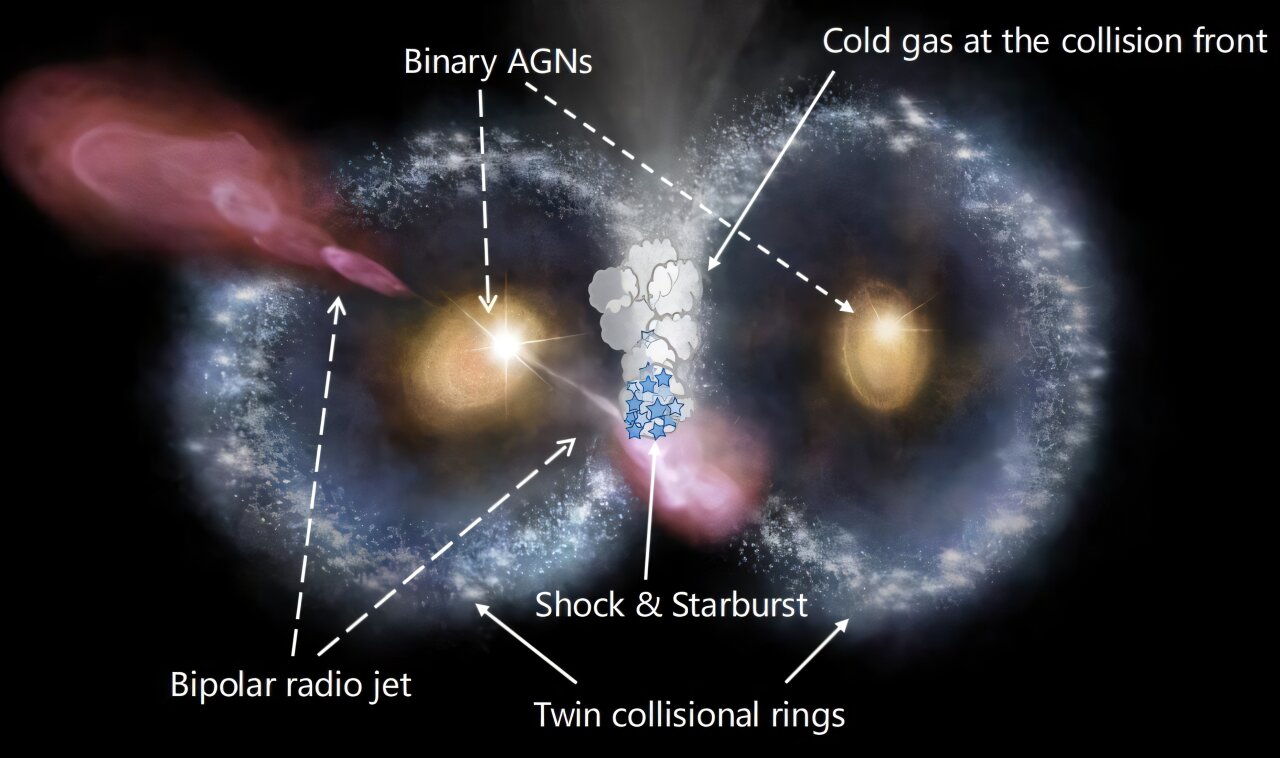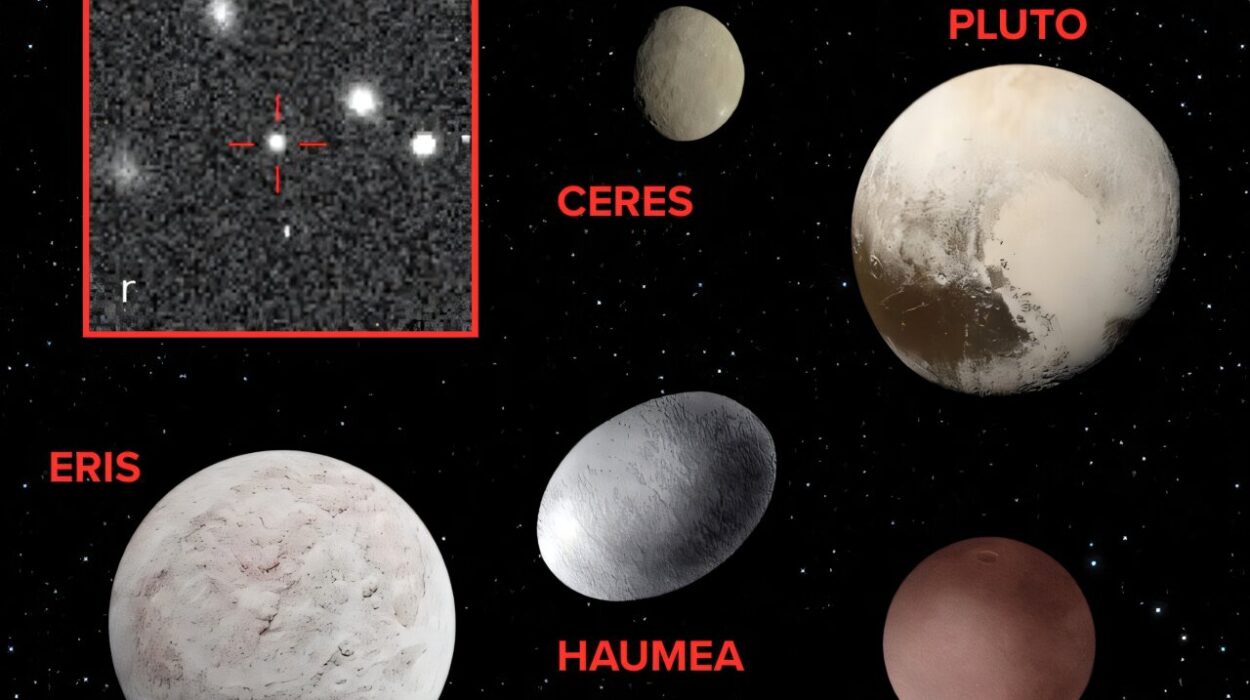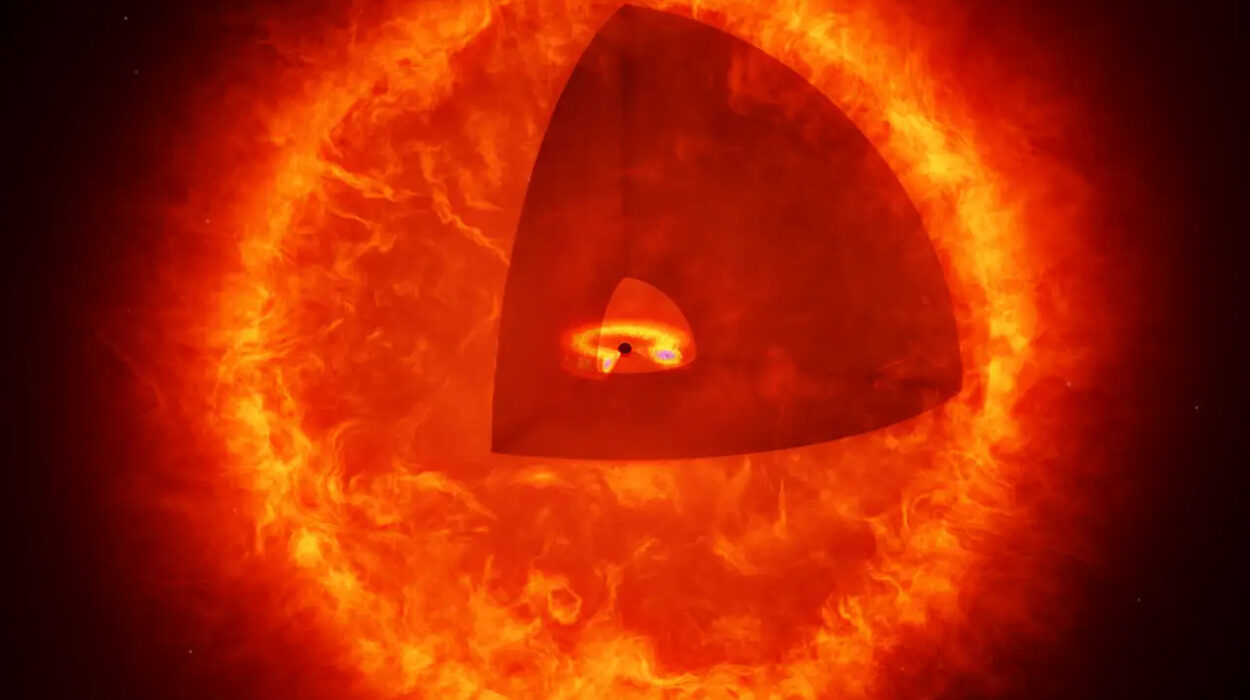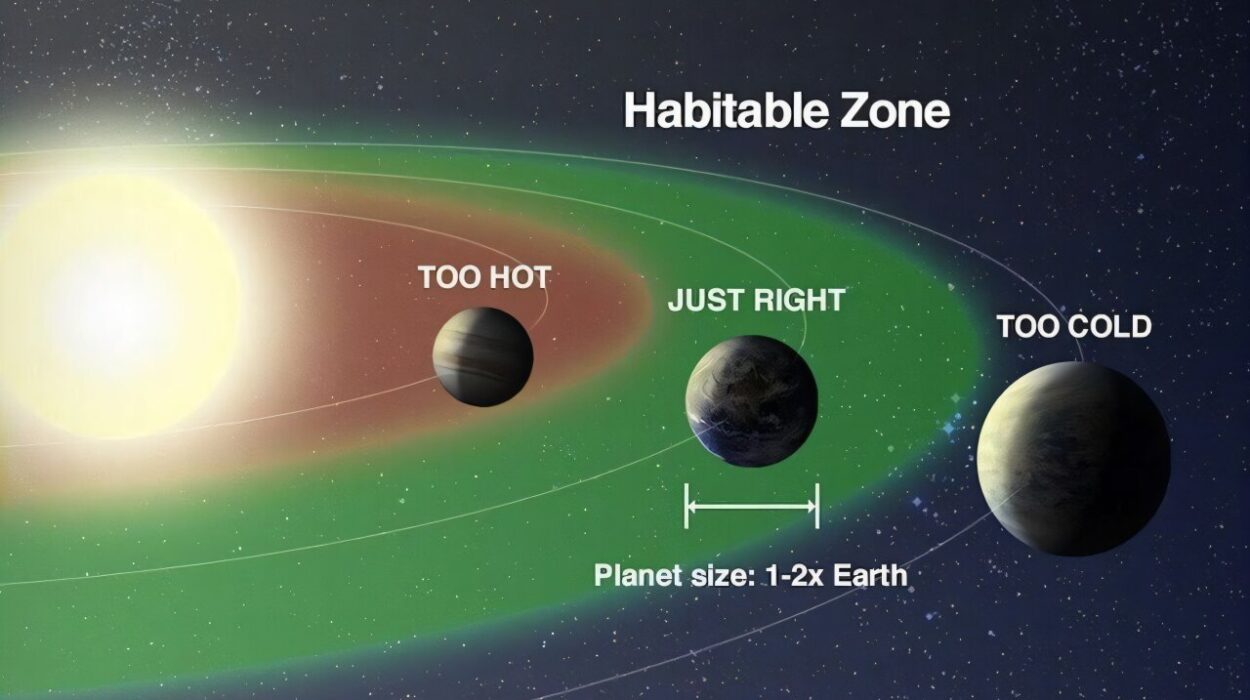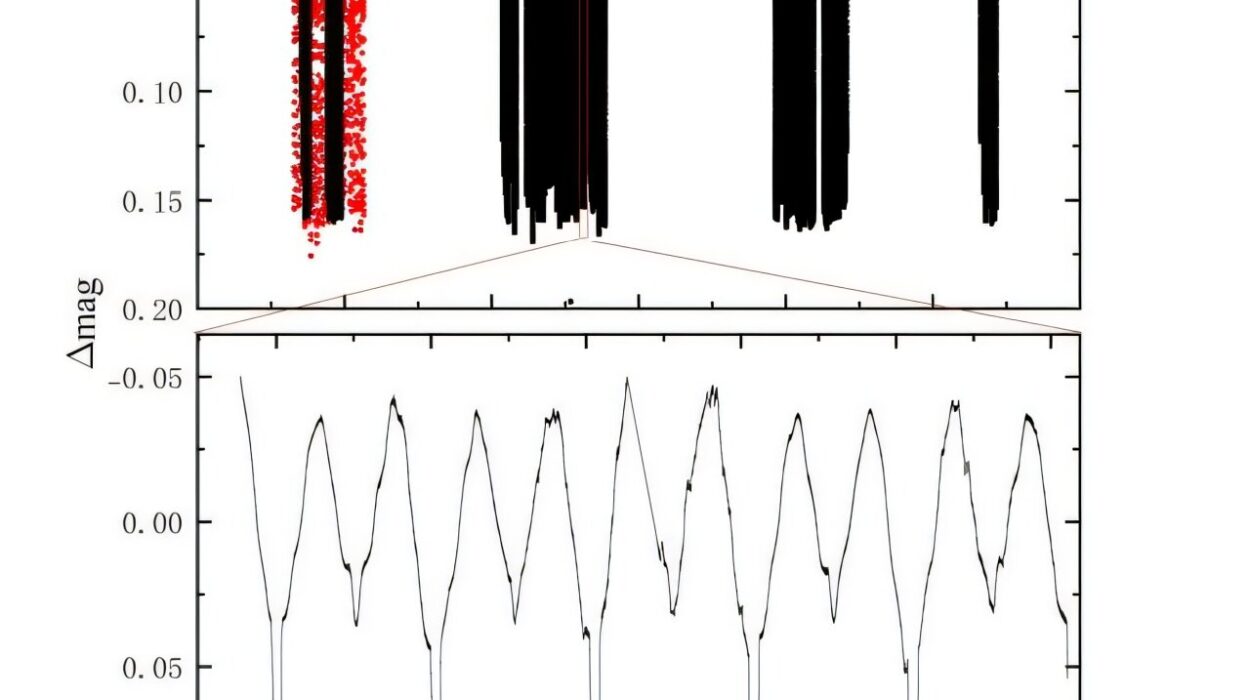In a universe filled with wonder and beauty, sometimes the cosmos stares back.
In a stunning new discovery that seems more like a cosmic painting than a random act of nature, astronomers have unveiled what may be one of the most visually compelling galaxy mergers ever observed—a pair of colliding ring galaxies whose symmetrical structure gives the illusion of a wide-eyed owl peering through space.
Dubbed the “Cosmic Owl”, this extraordinary structure was spotted by an international team of astronomers led by Mingyu Li of Tsinghua University in Beijing. Their findings, posted June 11 on the arXiv preprint server, reveal a galactic merger at redshift 1.14—meaning the event took place roughly 8.8 billion years ago, when the universe was still in its adolescence.
With glowing “eyes,” a delicate “beak,” and concentric star-forming rings, the Cosmic Owl is not just a whimsical visual metaphor. It is also a scientific treasure trove—a rare chance to watch two collisional ring galaxies in the process of coalescence, offering an unprecedented glimpse into how galaxies grow, change shape, and feed their supermassive black holes.
A Serendipitous Encounter in the Deep Sky
The Cosmic Owl wasn’t part of a planned survey. Like many of the universe’s greatest surprises, it appeared unexpectedly in high-resolution observations gathered using a suite of cutting-edge instruments, including the James Webb Space Telescope (JWST), the Atacama Large Millimeter/submillimeter Array (ALMA), and the Very Large Array (VLA).
“Deep imaging and spectroscopy from JWST, ALMA, and VLA reveal a complex system of twin collisional ring galaxies, exhibiting a nearly identical morphology,” the researchers wrote in their paper.
At a glance, the images are astonishing. Two bright galactic cores form the “eyes” of the owl. Circular waves of stars and gas expand around them, forming two overlapping rings about 26,000 light-years wide—roughly a quarter the diameter of the Milky Way. In between lies a bluish region of intense star formation, glowing with the ultraviolet energy of hot, young stars. This central bridge forms the “beak.”
Together, these features conjure a cosmic face—a brief moment of symmetry in a chaotic universe.
The Dance of Destruction and Creation
Galaxy mergers are a fundamental process in the evolution of the universe. They are violent, transformative, and paradoxically creative. When galaxies collide, gravitational forces tear stars from their orbits, collapse clouds of gas, and ignite bursts of star formation. Over time, these collisions can radically change a galaxy’s shape, fuse black holes, and redistribute mass across vast regions.
But collisional ring galaxies, like those in the Cosmic Owl, are a special breed. They are forged not in a slow, spiraling embrace, but in a nearly head-on collision, where one galaxy plunges directly through the heart of another. The impact sends a shockwave through the galactic disk, pushing stars and gas outward in a ripple—like a cosmic stone skipping across a galactic pond.
These ring structures are rare. Only a few hundred have been cataloged in the local universe. Finding two of them, interacting and nearly identical in shape and size, is unprecedented.
The researchers believe this symmetry offers strong evidence that the two galaxies were similar in mass and structure before the collision. That similarity, combined with the directness of the impact, created a cosmic mirror: twin rings, twin “eyes,” and a snapshot of a fleeting phase in galactic evolution.
Measuring the Heart of the Owl
But beauty isn’t the only prize here—there’s physics beneath the feathers.
The Cosmic Owl system is massive. Combined, the two galaxies hold about 320 billion times the mass of our Sun in stars. Nestled at their centers are two supermassive black holes, weighing in at 67 million and 26 million solar masses respectively.
Both black holes are active—meaning they are feeding on surrounding gas and dust and glowing with energy. This rare dual AGN (active galactic nucleus) activity gives astronomers a front-row seat to study how black holes grow during galaxy mergers.
Even more dramatic, the northwestern galaxy—one of the Owl’s glowing eyes—launches a bipolar radio jet, a stream of high-energy particles accelerated near the black hole and ejected at near-light speed. That jet stretches into the Owl’s “beak” region, stirring up gas and triggering new waves of star formation in its path.
This chain reaction, from collision to black hole feeding to starburst, paints a vivid picture of how galaxies build themselves and how supermassive black holes grow in tandem with their host galaxies.
A Rare Laboratory for Galactic Evolution
Mingyu Li and colleagues emphasize that the Cosmic Owl is not just a pretty face. It is a natural laboratory for testing long-standing questions in galaxy evolution.
“The simultaneous occurrence of a head-on merger, twin ring formation, dual AGN activity, and a jet-triggered starburst offers a detailed snapshot of the mechanisms that assemble stellar mass and grow supermassive black holes in the early universe,” the team wrote.
Understanding these processes is crucial. Galaxy mergers are believed to have played a significant role in shaping the modern universe—fueling the growth of massive elliptical galaxies, feeding central black holes, and redistributing star-forming gas. But observing them in action, especially at high redshift, is difficult. Systems like the Cosmic Owl provide a rare, clear-cut example of these dynamics at work in a pristine, early-universe environment.
Why We Look to the Stars and See Faces
There’s something undeniably poetic about the way humans interpret the sky.
We’ve always seen faces in the heavens—from the Man in the Moon to the Horsehead Nebula. In the Cosmic Owl, it’s more than pareidolia. The twin rings, glowing eyes, and symmetrical structure invite not just scientific curiosity, but emotional wonder.
For astronomers, it’s a joyful coincidence. For the public, it’s a chance to connect with the universe in a way that feels familiar. And for science communicators, it’s a story that reminds us that the cosmos is not just math and data, but a source of awe.
This discovery also demonstrates the power of modern instruments. With JWST peering across space and time, and ALMA and VLA tracing cold gas and radio emissions, we are witnessing galaxy formation with clarity never before possible. Each year, the curtain lifts a little higher, revealing not just new facts—but new stories.
A Blink in Time, Etched in Light
The Cosmic Owl, like most things in the universe, won’t last. The rings will collapse. The two galaxies will coalesce. Their black holes will likely merge, sending gravitational waves rippling through space. The owl’s face will blur, fade, and disappear.
But for now, for this brief cosmic moment, it stares back at us—owl-eyed and silent, 8.8 billion years away—and invites us to ask what else the universe has yet to show.
Reference: Mingyu Li et al, The Cosmic Owl: Twin Active Collisional Ring Galaxies with Starburst Merging Front at z=1.14, arXiv (2025). DOI: 10.48550/arxiv.2506.10058
